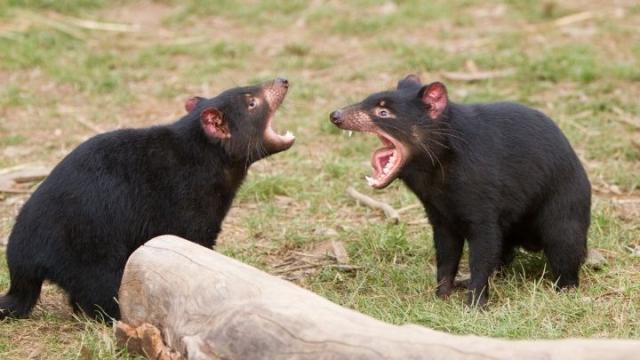Australian scientists now have insight into what Tasmanian Devils have been feasting on, thanks to their whiskers.
If you’re wondering what Tasmanian Devils eat, they’ll eat any animal protein they find, including lizards, frogs, insects and other mammals. They’ll also eat animal carcasses, bones, fur and all. Considering some animals could be diseased or could be poisonous, it’s important to track these kinds of things, especially with a critically endangered animal.
However, the whiskers of Tasmanian Devils hold chemical imprints of what they’ve been eating over at least the past nine months, with different qualities depending on what they’ve been up to.
So what does that mean? It means that scientists can quite accurately track what a cute little Tasmanian Devil has been getting up to and eating, including seasonal dietary changes and foraging habits. It’s quite a unique trait for an animal to have.
It’s sort of comparable to the rings in tree trunks. As trees get older, they start to build up more rings internally, demonstrating their age. Roughly, one year equals one ring in a tree, so scientists are able to accurately track how old trees are.
“We’re using the devils’ whiskers to trace back through time,” says Tracey Rogers, the senior author of the study at the University of New South Wales.
Rogers says that these whiskers, once dissected, paint a picture of the Tasmanian Devil’s activities. It’s something that scientists have known is possible with Tasmanian Devil whiskers for a while, but researchers were previously stumped as to how long the observable time frame was. They now know it can be up to a full year and have developed a tool to analyse this.
Rogers and her team were able to figure this out by feeding six captive Tasmanian Devils tablets that were enriched with “heavy stable isotopes” – safe kinds of atoms that don’t decay into other matter – to get the most accurate readings over time.
Because these atoms don’t decay, the team was able to observe the dietary habits of Tasmanian Devils through three month time stamps.
It might seem kind of pointless, being able to observe what an animal has been eating over the past 12 months. But this is the Tasmanian Devil we’re talking about – an animal that has almost been brought to extinction by a transmissible cancer called Devil Facial Tumour Disease.
This research will allow scientists a window into how Tasmanian Devils are faring in the wild and what their dietary habits are, both in and out of captivity.
“Since the discovery of this disease in the 1990s, many healthy individuals have been translocated to disease-free areas or are part of captive breeding programs to help boost their numbers,” says Dr Marie Attard, the lead author of the study and a postdoctoral research associate at Royal Holloway University of London.
“This whisker analysis tool will significantly enhance their management in pre-existing and translocated wild populations.”
